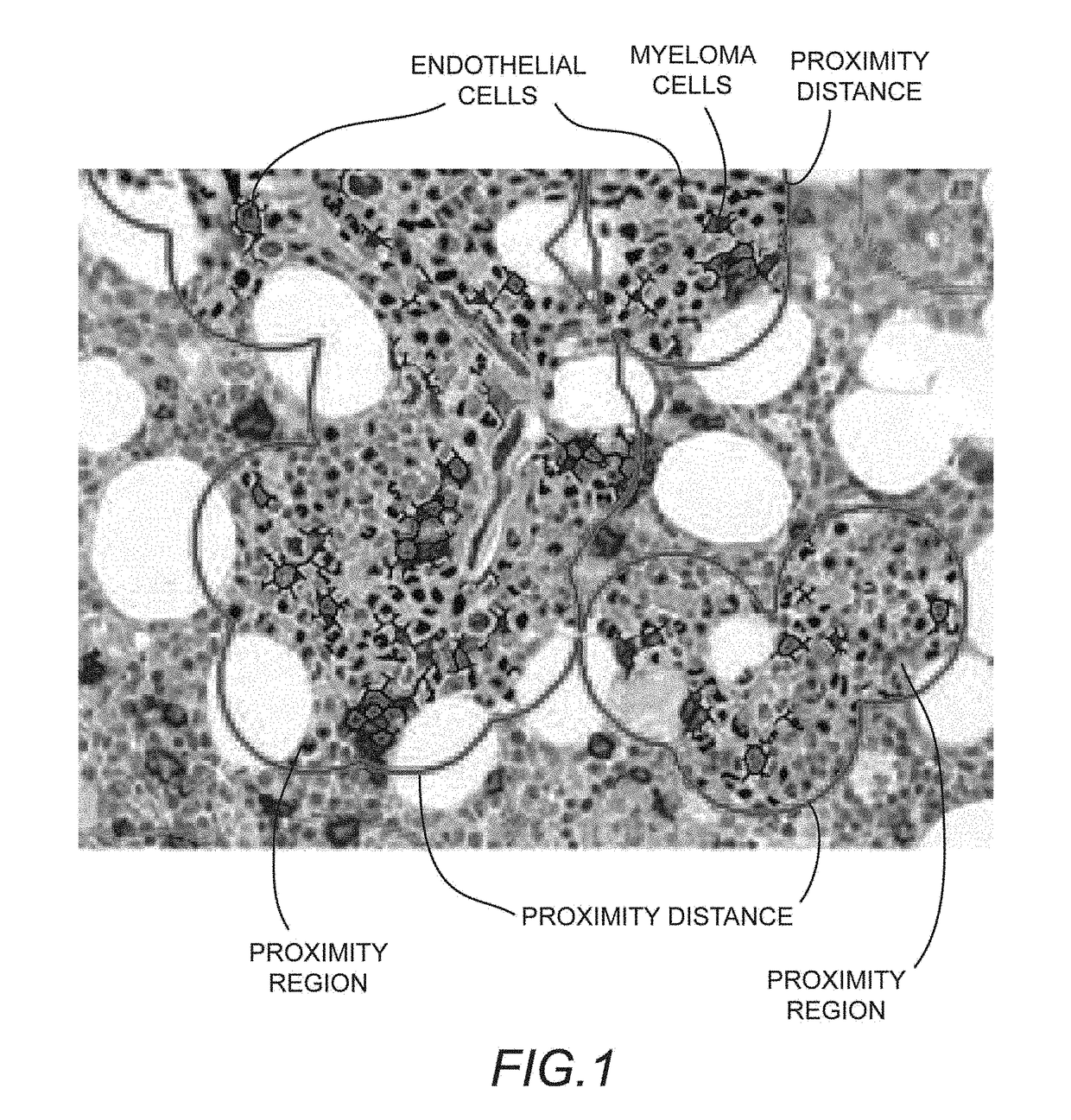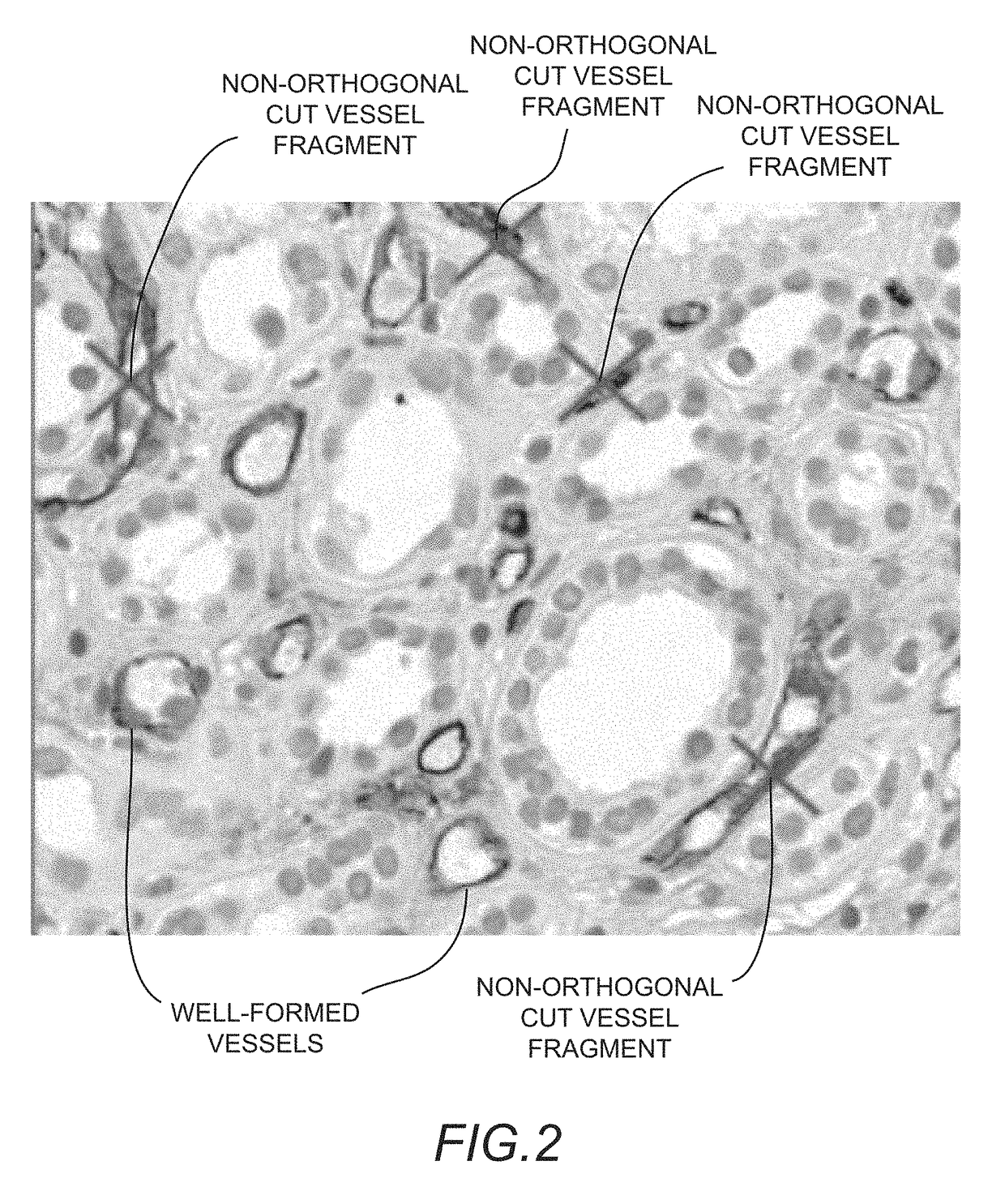Methods for measuring and reporting vascularity in a tissue sample
a tissue sample and vascularity technology, applied in the field of tissue sample vascularity measurement and reporting, can solve the problems of one vessel, difficult for pathologists (and especially the computer) to determine which vessel profiles, and inability to adequately number the vessels with image analysis
- Summary
- Abstract
- Description
- Claims
- Application Information
AI Technical Summary
Benefits of technology
Problems solved by technology
Method used
Image
Examples
Embodiment Construction
[0032]In the following description, for purposes of explanation and not limitation, details and descriptions are set forth in order to provide a thorough understanding of the embodiments of the invention. However, it will be apparent to those skilled in the art that the present invention may be practiced in other embodiments, including certain variations or alternative combinations that depart from these details and descriptions.
[0033]The methods disclosed herein are enhanced with certain aspects of the methods for feature analysis on consecutive tissue sections, as are described in commonly owned U.S. Pat. No. 8,787,651 issued Jul. 22, 2014; the contents of which are hereby incorporated by reference.
[0034]For purposes of this disclosure, the term “proximity analysis” refers to the determination of an amount of a first cellular entity that is within a given distance of a second distinct cellular entity;
[0035]“microvessel proximity analysis” refers to proximity analysis where one of ...
PUM
 Login to View More
Login to View More Abstract
Description
Claims
Application Information
 Login to View More
Login to View More - R&D Engineer
- R&D Manager
- IP Professional
- Industry Leading Data Capabilities
- Powerful AI technology
- Patent DNA Extraction
Browse by: Latest US Patents, China's latest patents, Technical Efficacy Thesaurus, Application Domain, Technology Topic, Popular Technical Reports.
© 2024 PatSnap. All rights reserved.Legal|Privacy policy|Modern Slavery Act Transparency Statement|Sitemap|About US| Contact US: help@patsnap.com









